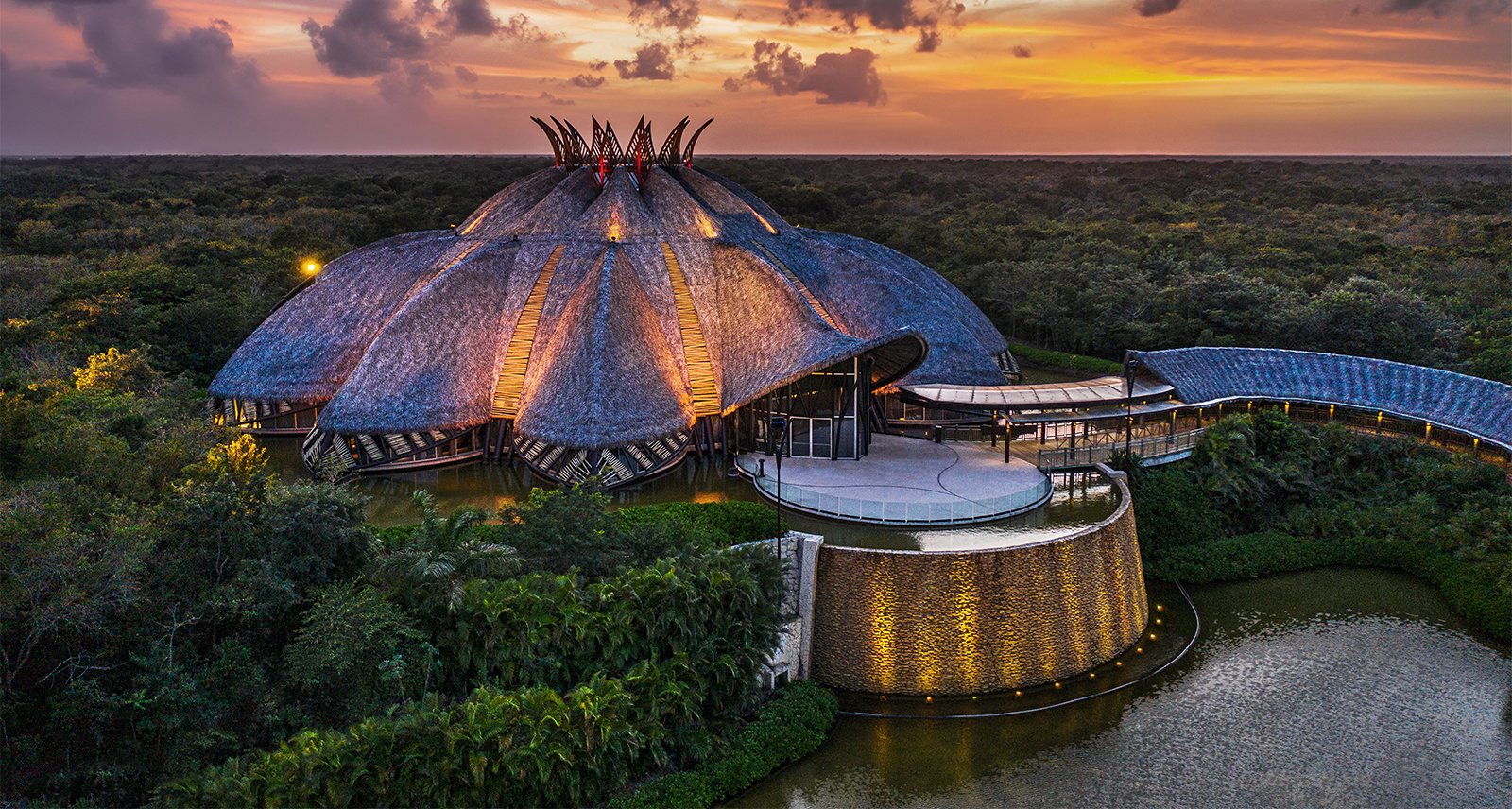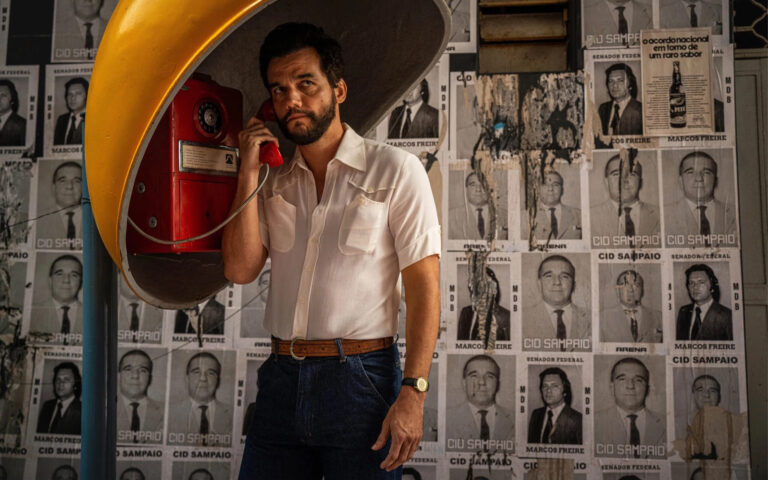You think you know Cirque. You’ve seen the gravity-defying flips, the skin-tight costumes shimmering like oil slicks under the spotlight, the perfectly timed choreography that makes you believe humans were born to fly. But here’s the thing about magic: it doesn’t just happen. It’s engineered, stitched, rehearsed into submission. Behind every gasp from the audience is a small army of artisans, athletes, and engineers ensuring nothing goes sideways.
And JOYÀ — Cirque du Soleil’s first resident show in Mexico at Vidanta World Riviera Maya — is a microcosm of this madness, a high-wire act of precision and controlled chaos.
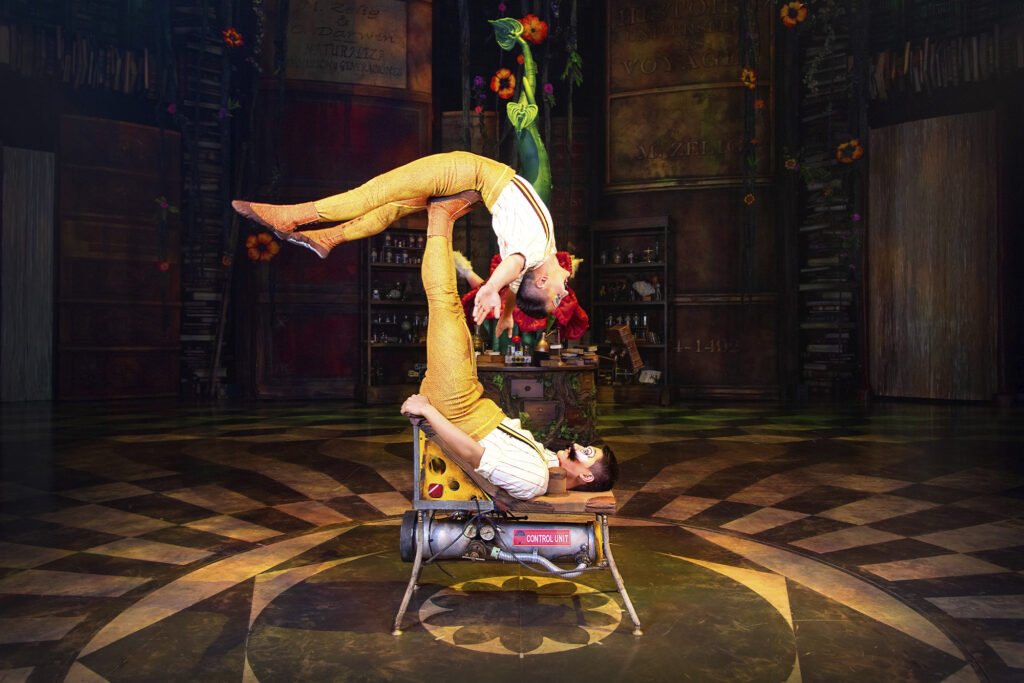
A Theatre That Disguises Its Complexity
Before you even enter the theatre, you’re in Cirque’s world. The JOYÀ venue, tucked away in the jungle like a fever dream, is designed to make you forget where you are. Architect Arturo Hernández envisioned a space guided by three principles: respect the jungle (animals can, and do, freely move through and beneath the wooden walkways and palapas), conceal the theatre among the mangroves, and play with sinuous lines and organic shapes.
The thatched palapa-style roof leans forward like a palm tree bracing against the wind, blending into the mangroves as if conjured out of limestone and humidity. The main structure? Hernández’ interpretation of a flower unfurling toward the sky.
“These giant books open to reveal performers — even a pirate ship. It makes you feel the poetry of it all.”
Artistic Director Caroline Sicard
Everything sits below the jungle’s 12-metre treeline — by law, no structures here can rise above it unless made of natural materials. Sustainability is woven into its bones: every plant displaced during construction was relocated and replanted, and only local woods were used.
Inside, it gets even more interesting. The 650-seat theatre is built for intimacy — no bad views, no cheap seats — just a stunning, multi-level stage where the laws of physics will soon be ignored. “We use art to disguise the structure,” says Artistic Director Caroline Sicard, revealing the steel beams and hidden rigging, a technological beast masquerading as a fantastical library interior. “These giant books open to reveal performers — even a pirate ship. It makes you feel the poetry of it all.”
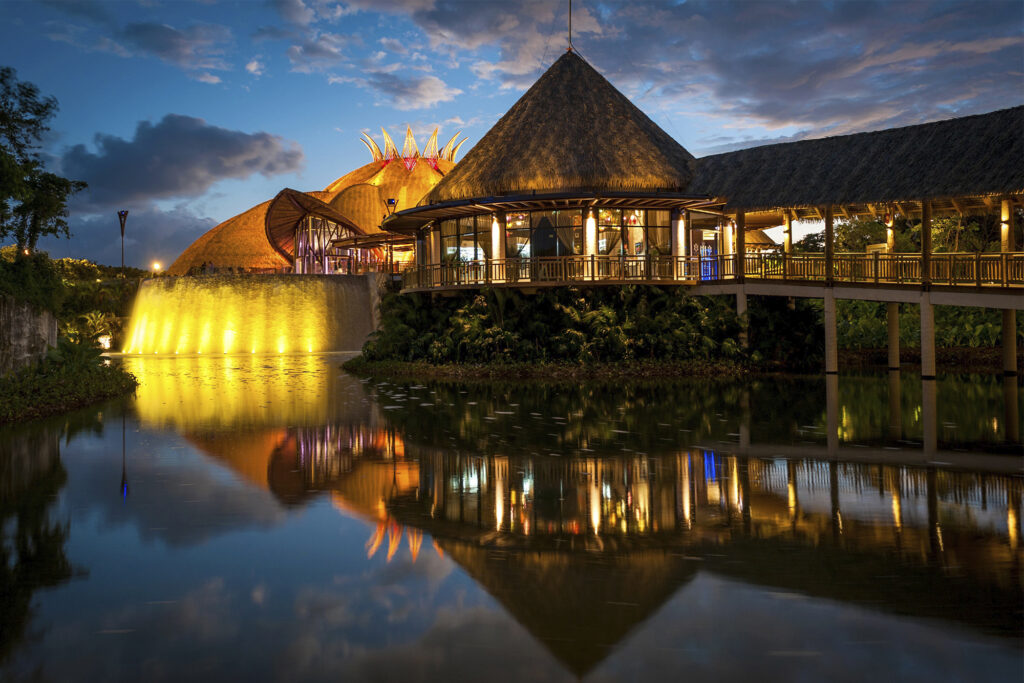
Costume Alchemy: Fashion Meets Physics
Costume designer James Lavoie wasn’t just designing outfits; he was crafting visual narratives. Take Zelig, the show’s endearing old alchemist and JOYA’s grandfather. His ensemble — layered textiles printed with botanical sketches — feels as if he’s literally wearing the wisdom he’s accumulated over time. His half-animal, half-human assistants? Each adorned with hand-placed Swarovski crystals, their designs toeing the line between fantasy and surrealism.
“We keep about three hundred costumes for the show,” says Juan Carlos Loa Lopez, Head of Wardrobe. “Most artists have two or three costumes per show, plus backups.”
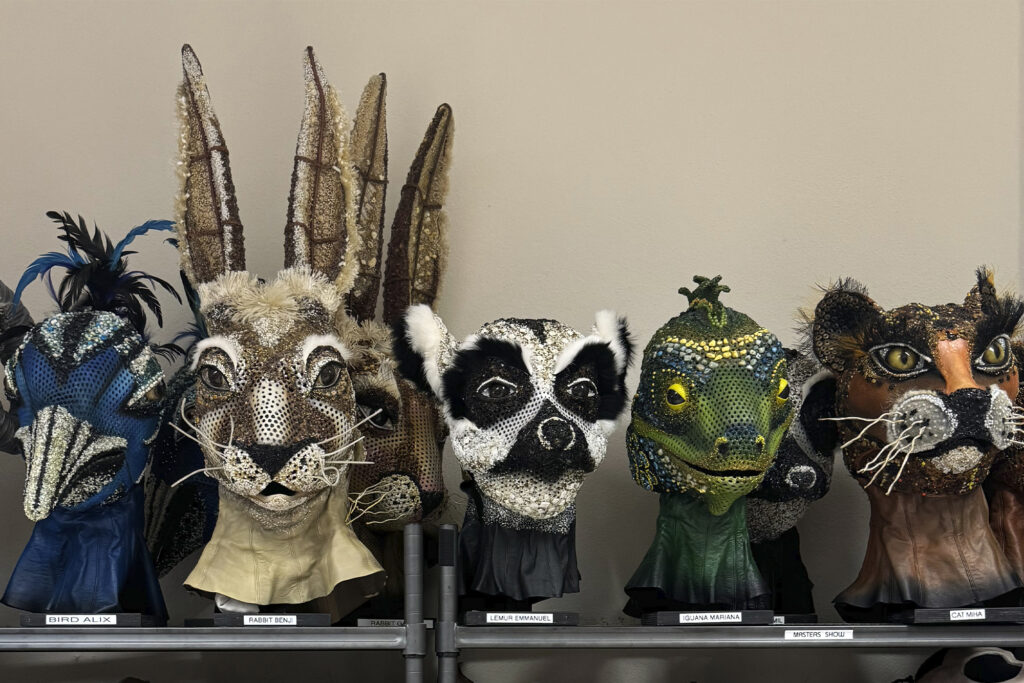
The Master of Water’s costume took painstaking hours of hand-sewing to create the illusion of coral overtaking a human body. The shadow creatures? Dipped in black silicone to catch the light in eerie, supernatural ways. And every one of these needs to survive the nightly gauntlet of flips, dives, and aerial stunts.
Engineering the Impossible
What looks effortless on stage is a mechanical ballet behind the scenes. Rigging designers fine-tune the pulley systems that allow aerialists to catapult themselves with pinpoint accuracy. “Behind the red curtains is a place where we can fly performers from,” says Sicard, pointing to a trio of tracks suspended from the ceiling. “Those tracks utilize winches with automation, requiring an operator to initiate, on receiving the performers cue when they are ready.” Everything is tested, re-tested, and then tested again. Failure is not an option when you’re dangling 30 feet in the air.
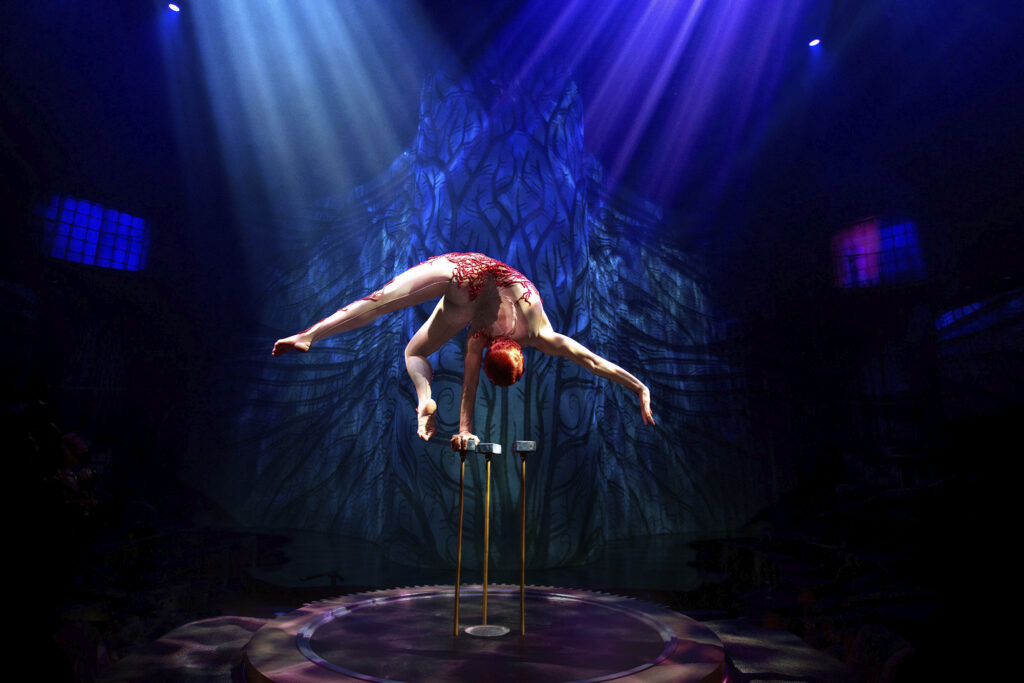
Below the stage, it’s a different kind of symphony — one made of hidden hydraulics, counterweights, and steel frameworks that support the show’s constant transformations. It’s part engineering marvel, part high-stakes puzzle.
Time is Sicard’s most precious commodity. “It’s a balancing act,” Sicard says. “We have to validate safety, manage logistics, ensure artistic quality — our stage time that never changes.”
The Art of Becoming: Makeup and Character Design
Makeup in JOYÀ isn’t just decoration — it’s identity. Makeup designer Nathalie Gagné crafted 110 distinct colours for the cast, each look applied through a meticulous 30-step process. The result? A mesmerizing tapestry of human-animal hybrids, ethereal aerialists, surreal scholars, and the show’s rebellious heroine, JOYÀ, alongside her wise and ever-curious grandfather, Zelig.
“That’s how this show works — the reflection of what you bring with you into the theatre is also a facet of the story.”
Artistic Director Caroline Sicard
Dining as Theatre
This isn’t your standard pre-show meal. Here, dinner is as much performance as the acrobatics. Chef Alexis Bostelmann has built a menu that’s equal parts gastronomic art and sleight of hand: edible books, liquid nitrogen dragon’s breath, caviar that isn’t actually caviar.
The logistics of serving a choreographed dinner to nearly 200 guests (twice on double-show nights) is a masterclass in controlled chaos. Timing is everything — when servers are weaving between acrobats, you can’t afford a misstep.

The People Behind the Magic
Cirque’s performers make the impossible look inevitable. But the secret sauce? It’s the hundreds of people you never see. The JOYÀ machine is powered by 300 professionals, 40 full-time performers, and 35 theatrical technicians who work tirelessly to make sure each show lands like opening night. They train, rehearse, break, rebuild, and repeat — because perfection isn’t a happy accident; it’s a full-contact sport.
And that’s the real trick, isn’t it? To make the impossible look effortless. To erase every trace of the blood, sweat, and steel that props up the illusion. You might walk out of JOYÀ humming its melodies, dazzled by its spectacle, but the real magic — the best kind of magic — is knowing it was all meticulously, brilliantly built.
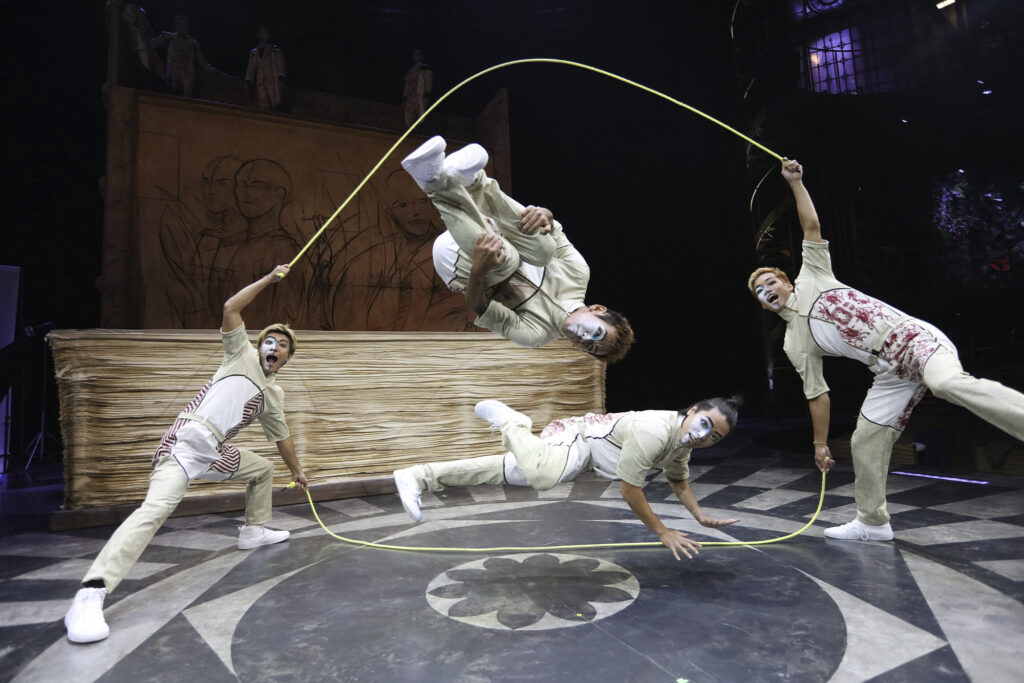
“The first time I saw the show,” Sicard tells us, “there was a moment when the theatre becomes an underwater scene and JOYA dives deep after the book of knowledge. It’s my favourite moment — it felt personal. And that’s how this show works — the reflection of what you bring with you into the theatre is also a facet of the story.”
Imagery courtesy of Cirque du Soleil
Mask photograph courtesy of Eric Hendrikx
